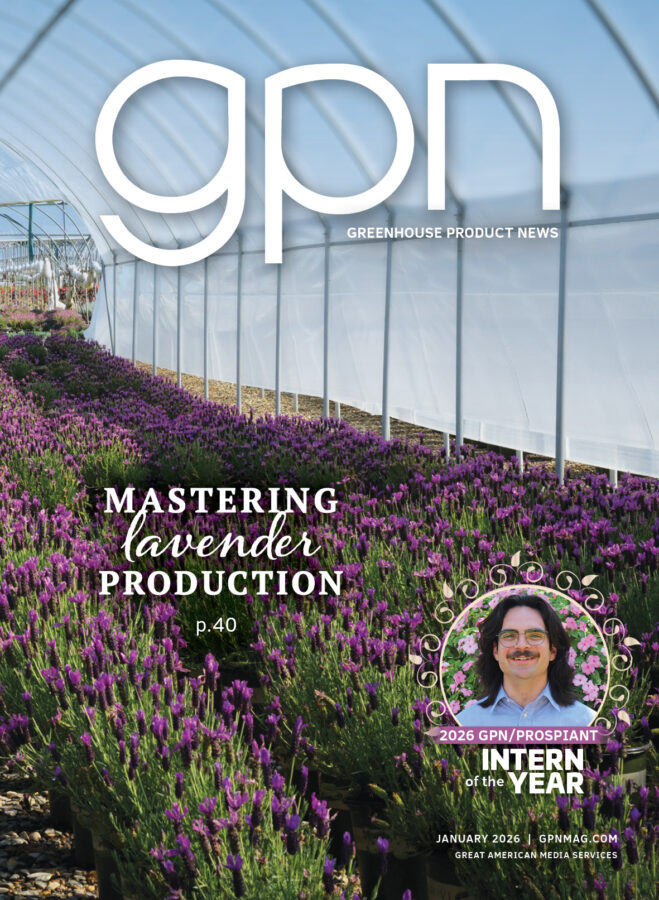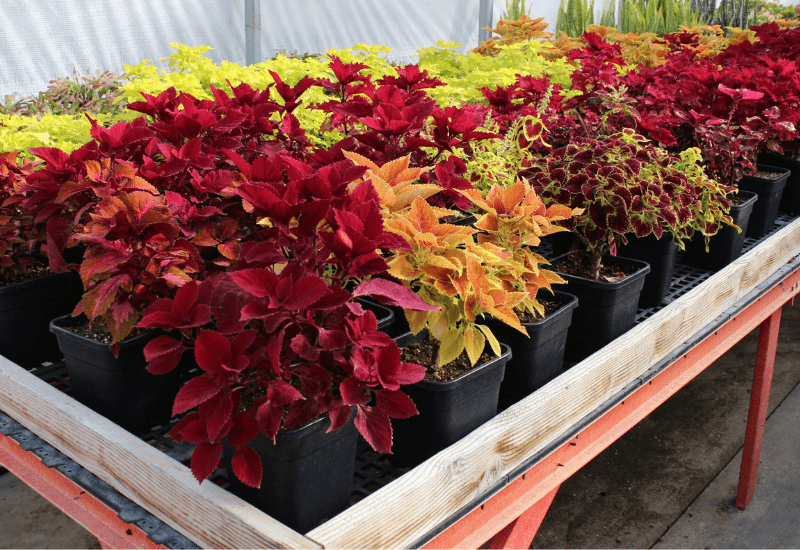
Plant breeding and pest management considerations for growers
The production of horticultural crops through plant breeding is important so that new plant varieties or cultivars are available to consumers who demand new, improved and easy-to-grow plants.
To satisfy demands, breeders evaluate seedlings or select for traits such as plant size, shape and flower color (Luby and Shaw 2009). Traditional breeding of horticultural crops involves developing cultivars or varieties with improved floral features (e.g., color, shape, odor and enhanced vase life) and leaf characteristics (e.g., variegation and shape) that appeal to consumers (Van Huylenbroeck and Bhattarai 2022).
Plant breeding programs primarily focus on developing plants that are marketable with distinct selling qualities associated with flowers, leaf variegation and other plant traits, such as curled or wrinkled leaves and compact growth. These traits are obtained by making crosses among related plants.
However, breeding can result in removing wild-type genes responsible for producing natural defensive compounds (e.g., plant allelochemicals or secondary plant metabolites), which can increase the susceptibility of new varieties to insect and/or mite pests. Hence, natural or genetic resistant traits are bred out of selected plant cultivars, in favor of certain horticultural traits.
PEST CONSIDERATIONS
The current public emphasis to reduce pesticide (insecticide and miticide) use should promote the development of horticultural crops with inbred resistance or tolerance to pests. However, the level of developing plants for insect resistance in ornamental crops is limited compared to agricultural and vegetable crops. One problem is that plants preferred by the public are often susceptible to these pests.
A study evaluated bedding plant (impatiens, petunia, marigold and vinca) tolerance to spider mites and whiteflies. The study demonstrated that there is substantial variability in cultivar response to these two pests with certain cultivars expressing greater tolerance to spider mites and whiteflies than other cultivars (Meagher 1994).
Studies with geraniums showed that certain cultivars expressed various levels of resistance to spider mites. In general, resistant plants had leaves with trichomes (hairs) that exuded anacardic acid, a sticky substance that trapped spider mites and inhibited females from laying eggs (Potter and Anderson 1982, Gerhold et al. 1984).
Breeders can increase the attractiveness of certain varieties to consumers by developing plants with favorable horticultural traits, including plants with a large biomass (plant architecture), plants with variegated leaf color, and/ or plants having wrinkled or twisted foliage.
Although such plants may appeal to consumers, selection can occur with little consideration of susceptibility to pests. Consequently, breeding plants with certain traits may affect pest management by increasing plant susceptibility to pests, reducing the effectiveness of pesticide applications by inhibiting coverage of plant parts (e.g., leaves and stems), and decreasing the ability of biological control agents (BCAs), such as parasitoids and predators, to manage pest populations below plant-damaging levels.
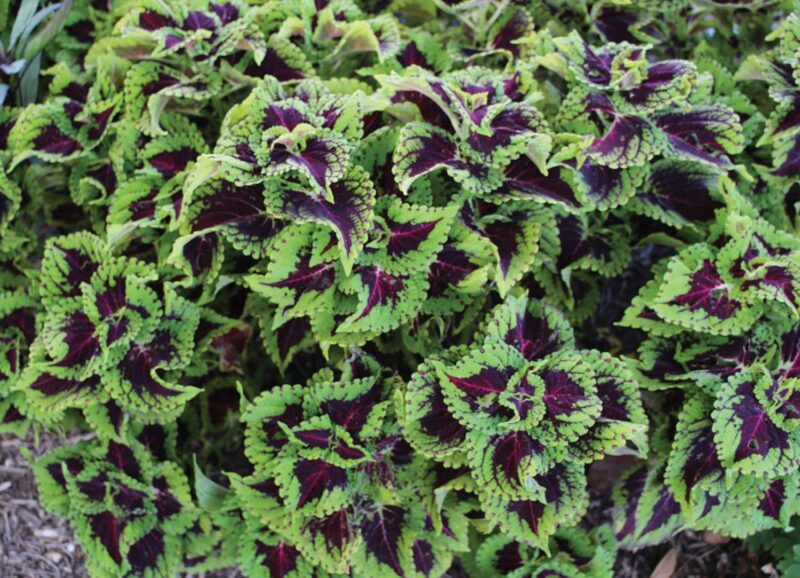
PLANT SUSCEPTIBILITY
The development of variegated plants with colorful foliage enhances their attractiveness to consumers. Variegated plants often have lower levels of chlorophyll (green pigment of plants) compared to plants with green leaves (Yang and Sadof 1995). Therefore, to compensate for the lack of chlorophyll, variegated plants produce more leaves (Evenari 1989, Sadof and Raupp 1991) and branches resulting in more hiding places for pests.
Plants with variegated leaves lack the natural defensive compounds associated with green plants (Sadof and Raupp 1992). They also have fewer green pigments, which reduces their ability to manufacture food through photosynthesis (Mooney et al. 1988).
The available resources (i.e., sugars and amino acids) are allocated toward growth, resulting in producing more leaves and branches (Field and Mooney 1986), leaving fewer resources that plants can use to produce natural defensive compounds against pests (Niemela et al. 1984). For example, the variegated sweet potato vine, Ipomea batatus, is more susceptible to aphids than the nonvariegated type, which may be associated with the removal of natural defensive compounds during the breeding process.
REDUCING EFFECTIVENESS OF PESTICIDES
Plants with complex architectures — an abundance of leaves and branches — can be difficult to cover thoroughly with pesticide spray applications. The abundance of leaves inhibits penetration into the interior plant canopy allowing pests to avoid exposure from pesticide spray applications (Yeary et al. 2018). In addition, plants with complex architectures provide more hiding places for pests, making it difficult to contact them with pesticide spray applications (Yeary et al. 2018). More time is required to spray these plant types to obtain sufficient spray coverage.

DECREASING THE ABILITY OF BIOLOGICAL CONTROL AGENTS
Plants with complex architectures can influence the effectiveness of BCAs, such as parasitoids and predators, in managing insect or mite pest populations below plantdamaging levels (Cloyd and Sadof 2000). Plants with a complexity of leaves and branches can inhibit the ability of parasitoids and predators to locate pests because they must search a large area, resulting in BCAs spending more time searching for pests on plants (Clark and Messina 1998, Weisser 1994, Legrand and Barbosa 2003). Consequently, pests avoid being attacked or fed upon. In addition, wrinkled and twisted leaves can hinder the ability of BCA’s to locate pests.
Biological control agents can spend more time searching for pests, influencing the effectiveness.
Complex plant architectures make it difficult to thoroughly cover all plant parts during pesticide spray applications.
References:
Clark, T. L., and F. J. Messina. 1998. Plant architecture and the foraging success of ladybird beetles attacking the Russian wheat aphid. Entomologia Experimentalis et Applicata 86: 153-161.
Cloyd, R. A., and C. S. Sadof. 2000. Effects of plant architecture on the attack rate of Leptomastix dacylopii (Hymenoptera: Encyrtidae), a parasitoid of the citrus mealybug (Homoptera: Pseudococcidae). Environmental Entomology 29: 535-541.
Evenari, M. 1989. The history of research on white-green variegated plants. Botanical Review 55: 106-139.
Field, C., and H. A. Mooney. 1986. The photosynthesisnitrogen relationship in wild plants, pp. 25-55. In: Givnish, T. J. (ed). On the Economy of Plant Form and Function. Cambridge University Press, New York, NY.
Gerhold, D. L., R. Craig, and R. O. Mumma. 1984. Analysis of trichome exudate from mite resistant geraniums. Journal of Chemical Ecology 10: 713-722.
Legrand, A., and P. Barbosa. 2003. Plant morphological complexity impacts foraging efficiency of adult Coccinella septempunctata L. (Coleoptera: Coccinellidae). Environmental Entomology 32: 1219-1226.
Luby, J. J., and D. V. Shaw. 2009. Plant breeder’s perspectives on improving yield and quality traits in horticultural food crops. HortScience 44: 20-22.
Meagher, R. L. 1994. Resistance of bedding plants to twospotted spider mite and sweet potato whitefly. Subtropical Plant Science 46: 62-65.
Mooney, H. A., M. Kuppers, G. Koch, J. Gorham, C. Chu, and W. E. Winner. 1988. Compensating effects to growth of carbon partitioning changes in response to SO2 -induced photosynthetic reduction in radish. Oecologia 75: 502-506.
Niemala, P., J. Tuomi, and S. Siren. 1984. Selective herbivory on mosaic leaves of variegated Acer pseudoplatanus. Experientia 40: 1433-1434.
Potter, D. A., and R. G. Anderson. 1982. Resistance of ivy geraniums to the twospotted spider mite. Journal of the American Society for Horticultural Science 107: 1089-1092.
Sadof, C. S., and M. J. Raupp. 1992. Effect of leaf variegation in Euonymus japonica on Tetranychus urticae (Acari: Tetranychidae). Environmental Entomology 21: 827-831.
Sadof, C. S., and M. J. Raupp. 1991. Effect of variegation of Euonymus japonica var. aureus on two phloem feeding insects, Unaspis euonymi (Homoptera: Diaspididae) and Aphis fabae (Homoptera: Aphididae). Environmental Entomology 20: 83-89.
Van Huylenbroeck, J., and K. Bhattarai. 2022. Ornamental plant breeding: entering a new era? Ornamental Horticulture 28: 297-305.
Weisser, W. W. 1995. Within-patch foraging behaviour of the aphid parasitoid Aphidius funebris: plant architecture, host behaviour, and individual variation. Entomologia Experimentalis et Applicata 76: 133-141.
Yang, J., and C. S. Sadof. 1995. Variegation of Coleus blumei and the life history of citrus mealybug (Homoptera: Pseudococcidae). Environmental Entomology 24: 1650-1655.
Yeary, W., A. Fulcher, H. Zhu, W. Klingeman, and J. Grant. 2018. Spray penetration and natural enemy survival in dense and sparse plant canopies treated with carbaryl: implications for chemical and biological control. Journal of Environmental Horticulture 36: 21-29.








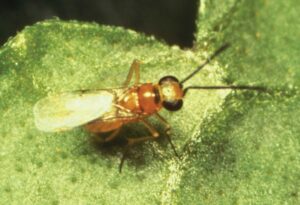
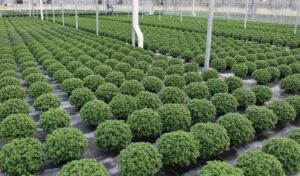

 Video Library
Video Library 

















